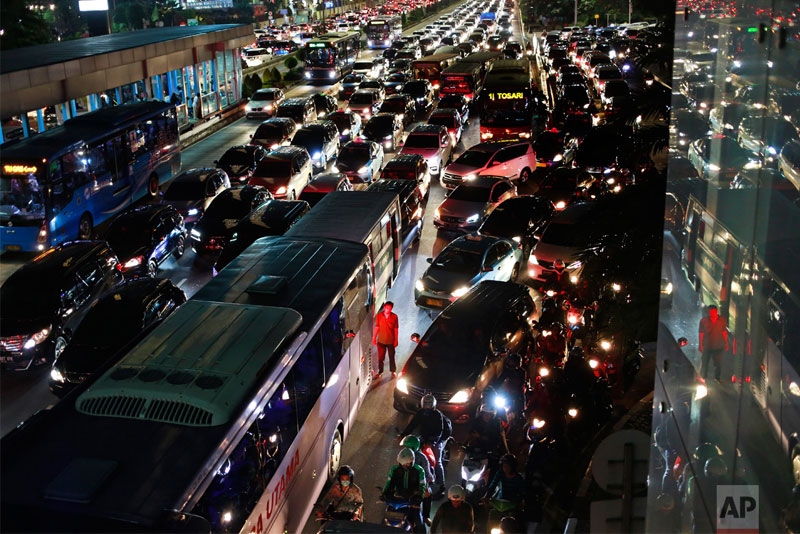‘Traffic making Philippine cities uninhabitable’
February 5, 2018 at 15:30
‘Traffic making Philippine cities uninhabitable’
MANILA, Philippines — Metro Manila and key cities in the provinces are on their way to becoming “uninhabitable” as foreign business leaders continue to lament the worsening traffic situation in the country.
Traffic congestion not only in Metro Manila but also in provincial urban centers is worsening and needs to be addressed immediately, foreign business leaders told The STAR over the weekend.
“With the rate that new vehicles are being put on the roads, Manila, Cebu, Davao, Baguio, and cities elsewhere are becoming uninhabitable, as predicted by a foreign observer two years ago,” American Chamber of Commerce of the Philippines John Forbes reiterated.
Echoing a remark by a foreign observer, Forbes warned two years ago that Metro Manila is at risk of becoming uninhabitable in four years given the country’s road infrastructure problems and annual new car sales growth that is expected to increase to 500,000 by 2020.
“Serious improvement to the worsening traffic situation needs to be achieved. Core infrastructure spending needs to happen,” Nordic Chamber of Commerce of the Philippines Inc. president Bo Lundqvist said.
“Core infrastructure is still a challenge to growth, and little in concrete steps has been done to improve the situation. Such improvements are necessary stepping stones towards the growth targets of the economy for future years,” Lundqvist added.
Further feeling the impact of the worsening traffic gridlock during the holiday season, the Joint Foreign Chambers (JFC) in the Philippines last December issued a statement urging Congress to speed up the passage of the proposed Traffic and Congestion Crisis Act.
The group also asked President Duterte to certify the measure as urgent to speed up its passage.
The Traffic and Congestion Crisis Act seeks, among others, to reduce obstacles to the implementation of transportation projects, such as barring lower courts from issuing temporary restraining orders, for the duration of the emergency powers.
Duterte had said Manila would be a “dead city in 25 years” as he lamented the worsening traffic situation in the capital and moved for the development of other potential urban hubs outside Metro Manila.
Duterte stressed the importance of developing other industrial areas in the country as Metro Manila would no longer be a viable destination for investment.
In airing its concerns, the JFC cited a study commissioned by Uber showing that Bangkok, Jakarta and Manila have the worst traffic in Asia.
An Uber-commissioned survey released last November showed that people in the country’s capital have the third longest average time being stuck in traffic every day at 66 minutes, next to Bangkok with 72 minutes, and Jakarta with 68 minutes.
The JFC has also highlighted the results of the “Unlocking Cities” study by the Boston Consulting Group, which warned that “at current vehicle growth levels, Tier III cities (Manila) are at risk of reaching standstill levels of congestion (<10km/hour) during peak hours by 2022.”
Last year, total vehicle sales in the country reached a record level of 476,073 units based on combined data from the Chamber of Automotive Manufacturers of the Philippines Inc. and the Association of Vehicle Importers and Distributors. The outcome was six percent better than the 450,000-unit industry forecast.
Vehicle sales, however, are expected to slow down this year as a result of the implementation of the first tax reform package, which included a provision for higher automobile excise tax.























